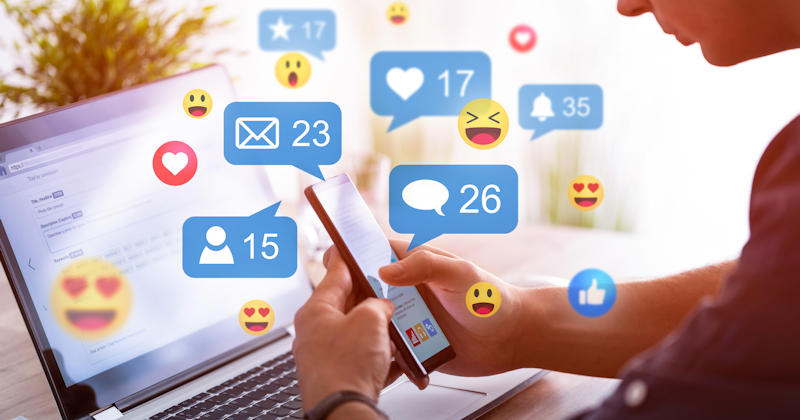 Mastering Email and Text Etiquette: A Guide to Professional Communication
Mastering Email and Text Etiquette: A Guide to Professional Communication
In today’s fast-paced world, email and text messaging have become essential tools for communication in both personal and professional settings. However, the convenience of these tools can sometimes lead to overlooked etiquette, resulting in miscommunication, misunderstandings, or even damaging your professional reputation. At Treasure Web Designs, we know that effective communication is key to building strong relationships, whether with clients, colleagues, or partners. That’s why mastering email and text etiquette is crucial.
The Importance of Communication Etiquette
Effective communication is more than just getting your message across. It’s about conveying your ideas clearly, respectfully, and professionally. Good communication etiquette shows that you value the person on the other end, respect their time, and are committed to maintaining a positive and productive relationship. Here’s how you can ensure your email and text messages are always on point.
Email Etiquette: Crafting Professional Correspondence
- Use a Clear and Relevant Subject Line: Your subject line should provide a brief overview of the email’s content. It helps the recipient understand the purpose of your message at a glance and prioritize it accordingly. For example, instead of “Question,” use “Question Regarding Project Deadline on August 27th.”
- Start with a Professional Greeting: Begin your email with a courteous greeting that addresses the recipient by name. If you’re unsure of their level of formality, it’s better to be slightly more formal (“Dear Mr. Smith” rather than “Hi John”). This sets a respectful tone for the rest of your message.
- Keep It Concise and to the Point: Busy professionals appreciate brevity. Get straight to the point while ensuring you include all necessary information. Break up long paragraphs into shorter ones to make your email easier to read.
- Use Proper Grammar and Punctuation: Mistakes in grammar or punctuation can make your message look unprofessional. Take the time to proofread your email before hitting send. Tools like spell-check can help, but don’t rely on them entirely.
- Be Mindful of Your Tone: Written communication lacks the nuance of verbal cues, making it easy for your tone to be misunderstood. Avoid using all caps (which can be perceived as shouting), and be careful with humor or sarcasm, as it may not come across as intended.
- Avoid Overusing CC and BCC: Only include people who need to be part of the conversation. Overusing CC (carbon copy) and BCC (blind carbon copy) can clutter inboxes and may come off as unprofessional.
- Include a Professional Sign-Off: End your email with a courteous closing, such as “Best regards” or “Sincerely,” followed by your name and contact information. This leaves the conversation on a polite note.
- Respond Promptly: Aim to respond to emails within 24 to 48 hours. If you need more time to provide a full response, send a quick note acknowledging the email and stating when you’ll follow up.
- Use an Appropriate Signature: Your email signature should include your name, title, company, and any relevant contact information. This not only looks professional but also provides the recipient with your details should they need to reach you by another means.
Text Etiquette: Professionalism on the Go
- Know When to Text: Texting is best for quick updates, confirmations, or urgent matters. If the topic requires a detailed response or is of a sensitive nature, opt for an email or phone call instead.
- Be Brief but Clear: Keep your text messages short and to the point. However, ensure you’re still clear in your communication. For example, instead of “Meeting?” you might say, “Are we still on for the meeting at 2 PM?”
- Respect Business Hours: Unless it’s an emergency, avoid sending work-related texts outside of regular business hours. Everyone deserves a work-life balance, and late-night texts can intrude on personal time.
- Use Proper Language: Even though texting is less formal, avoid using slang, abbreviations, or emojis in professional communication. Stick to full sentences and proper grammar to maintain professionalism.
- Double-Check Before Sending: Autocorrect can be both a friend and a foe. Always double-check your text for errors before hitting send. A simple mistake can change the meaning of your message and lead to confusion.
- Be Mindful of Tone: Like email, tone can easily be misinterpreted in text messages. Read your message before sending to ensure it comes across as intended—polite and professional.
- Acknowledge Receipt: If someone sends you important information via text, a quick “Got it, thank you” or “Will do” can confirm that you’ve received and understood their message.
- Know When to Move the Conversation Elsewhere: If the conversation is getting lengthy or complex, suggest moving it to email or setting up a call. This ensures that nothing is lost in translation and keeps the text thread manageable.
In today’s digital world, mastering email and text etiquette is essential for maintaining professionalism and fostering positive relationships. At Treasure Web Designs, we believe that good communication is the foundation of every successful project. By adhering to these guidelines, you’ll not only ensure your messages are clear and effective but also show respect for your clients and colleagues—an invaluable trait in any business relationship.
Whether you’re crafting an email or sending a quick text, remember: how you communicate matters just as much as what you communicate.
